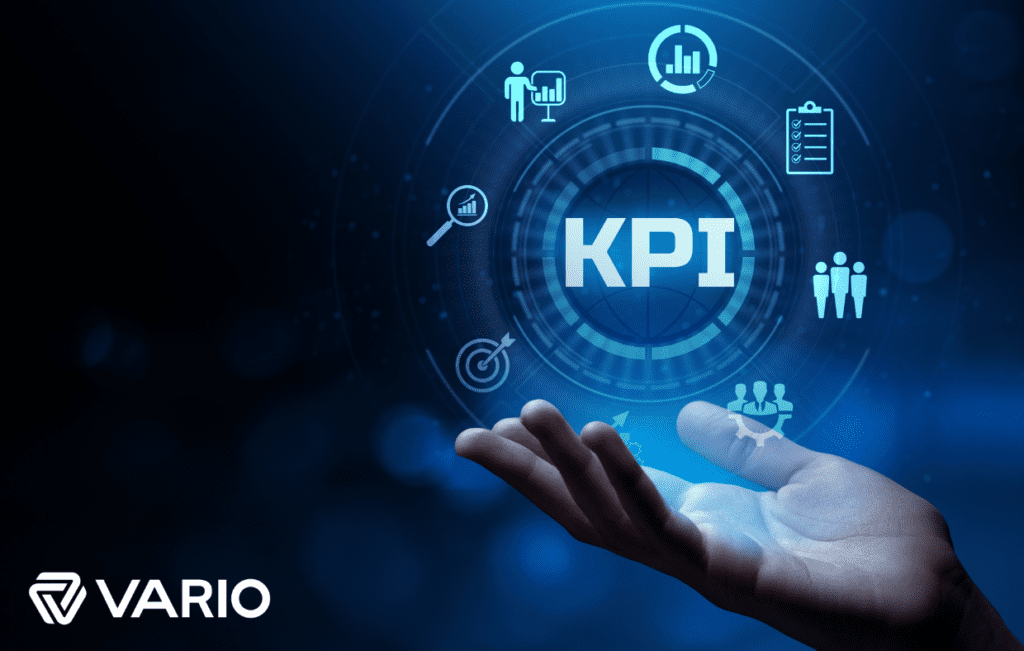Introduction to KPIs
If you’ve turned event planning from a hobby or part-time responsibility into a full-time job, you’ll quickly realize that along with bigger budgets comes the responsibility and expectations of meeting KPIs (Key Performance Indicators).
Key performance indicators are used to assess your event’s success but there can be a bit of a learning curve for planning with these in mind (and tracking your progress) if you don’t have a marketing or business background. To help you hit your event KPIs and even go beyond them, we’ll unpack KPIs and their importance in event management and then discuss 15 essential event KPIs. Keep reading to learn how to measure event marketing success through KPIs.
Why Are Event KPIs Important to Event Management?
Before we move into the world of event management specifically, let’s define KPIs in general. You already know that KPI stands for key performance indicator. KPIs are quantifiable performance assessments. They help to guide a company towards growth by measuring the concrete and specific numbers that correlate with success. KPIs are individual to each organization but they are typically calculated in comparison to:
- Targets
- Business objectives
- Other organizations within the industry
There are three core types of KPIs to consider:
- Financial Metrics – Financial KPIs are specific numbers associated with financial success such as revenues or profit margins. For example, a financial-related KPI for an event might be the total revenue from ticket sales or profit margin after accounting for all expenditures.
- Customer Metrics – Customer-related KPIs involve measurements of customer experience such as efficiency, satisfaction, or retention. They can also be calculated as financial sums such as customer acquisition cost (CAC) or customer lifetime value (CLV). For example, a customer-related event KPI might be the number of returning attendees for an annual event.
- Process Metrics – Process-related KPIs address operational efficiency or success. These depend heavily on the type of organization. For example, a process-related event KPI might be the amount of time each attendee waits in line at check-in.
Since KPIs can be complex measurements, organizations tend to measure them using available business analytics software. Simpler KPIs could be calculated by hand or with a basic tool like Microsoft Excel.
KPIs are important because they are tangible measurements of your success. When we’re talking about events with million-dollar budgets, stakeholders need to know that the investment into the event is worth the result. For event planners, these event KPIs also quantify your contribution to the organization. They can become bargaining tools for a budget increase at your next event.
15 Important Event KPIs to measure event marketing success
To enhance your understanding of KPIs and help you define each KPI for event management at your own event, let’s look at 15 specific KPIs.
We’ve again broken them into the same three categories:
- Financial
- Customer
- Process
Financial Event KPIs
Unless you’re an accountant or have a passion for math, crunching numbers might not be your favorite activity. Still, these KPIs are likely top of mind with leadership at your organization, so you will need to grow comfortable with them. Specific financial KPIs include:
- Revenue – Your revenue is the amount of money generated from the event. Gross revenue is the total amount of money while profit is the amount by which the revenue exceeds the expenses. Your leadership might favor one of these measurements (gross revenue vs. profit) more than the other, but it makes sense to always keep track of both. For repeating events, the revenue should ideally have an upward trajectory over time. You can also look at your organization’s overall revenue to analyze increases associated with the timing of certain events.
- Sales Growth Rate – Your sales growth rate looks at revenue increases from sales in a fixed period of time. You can get quite specific with this metric. For example, you might look at ticket sales during a pre-sale period.
- Return on Investment (ROI) – Your return on investment is the ratio between your income and investment. For your event, the ROI provides a clear example of the success of your investment.
- Expenditures – Your expenditures involve your monetary investment into the event. Common categories include travel, catering, and audio-visual services. Keeping your expenditures under a certain number can help ensure you achieve your other financial KPIs. You can also recognize operational inefficiencies that can be remedied.
Customer Event KPIs
Now, let’s look at the customer-related event KPIs. “Customer” might seem like a strange way to refer to your attendees, but on a fundamental level, any event is trying to sell something. An event could literally sell tickets or products, or it could “sell” an idea or way of thinking. Important customer-centric KPIs include:
- Customer Acquisition Cost (CAC) – Your customer acquisition cost is the ratio between your marketing expenses and the number of customers attained. You’ll want to know the amount of time and money that went into obtaining attendees, the cost to retain them, and the cost to increase their spending (i.e., by purchasing a more expensive ticket).
- Customer Lifetime Value (CLV) – Your customer lifetime value metric takes the customer acquisition cost and looks at it over time. For example, one customer might come to multiple events you produce, increasing their customer lifetime value. You can also use this metric to look at customers who didn’t return for other events.
- Attendee Registration – Your attendee registration explains how attendees ended up at your event. You likely have various marketing channels such as email, social media, and referrals. Tracking registration numbers from each of these channels can help you fine tune your future marketing efforts.
- Attendee Satisfaction – Your attendee satisfaction relates to how the customer perceived the event. You can provide post-event surveys to quantify this information and use it to inform your future event planning.
- Attendee Mindshare – Your attendee mindshare also deals with customer perception but towards your organization rather than the event itself. Again, post-event surveys can determine what attendees’ key takeaways were (do they align with your intended goals?) and whether they’re more likely to interact with your organization after the event. You might use this to calculate an average percentage increase in brand loyalty.
- Event Body Language – Your attendees’ event body language involves how they interacted with the event. Depending on the sophistication of your event management system, you can track which sessions they attended. The number of attendees at various sessions is an easily quantifiable metric to determine its success. If you know what type of sessions they favored, you can also personalize your post-event follow-ups. You can also plan content for future events based on what is the most popular (and consider leaving out what was least popular).
- Digital Body Language – Your attendees’ digital body language relates to their online interaction with you before, during, or after the event. These can be more specific KPIs such as website visits, link clicks, downloads, or opened emails. If you also track what content they respond to best, then your sales and marketing team can utilize that information in the future.
- Demographic Insights – Your demographic insights involve things like age, gender, or race. This might not be a KPI for everyone, but if you’re trying to increase the number of attendees at your event from a certain group, then this is another KPI that you can quantify.
Process Event KPIs
Last but certainly not least, let’s look at some possible process-related event KPIs. Some of these are similar to the financial or customer-based KPIs that we’ve already covered but the focus is instead on internal marketing and sales processes, including:
- Sales Leads – Sales leads are attendees who might convert into customers or stakeholders. You will set specific KPIs for the number of sales leads from each event. This might be broken further into the number of sales leads from specific sessions or the proportion of sales conversions or qualified leads.
- Social Media Metrics – There is no shortage of social media platforms or possible metrics. You can choose between raw numbers such as likes, shares, or followers or percentages such as engagement growth over a specific span of time. Find which KPIs to focus on by identifying the social media platforms where your potential attendees already are and then choosing metrics that most directly relate to conversion from follower to attendee (i.e. are people who share your posts are more likely to register than those who simply like them?).
- Press Impact – You can easily quantify the number of media mentions that your event received through quick online research. You might have a specific KPI number, or you can take this metric one step further by calculating the cost of the same paid advertising to create an organic media reach dollar value.
How Vario Can Help
If you’re wondering how to measure event marketing success, you’re already on the right track. The impulse to set these quantitative metrics will help you to produce successful events and push subsequent events to grow so that your organization can too.
Ready for your events to graduate from good to great? Vario brings over 20 years of event production experience to each event we manage and produce. Our experts can help you put together truly show-stopping events. Contact us to learn more about the expert edge we can provide today.
Sources:
Investopedia. Key Performance Indicators (KPIs). https://www.investopedia.com/terms/k/kpi.asp
Event Marketer. THE MEASURE OF SUCCESS: WHAT TO MEASURE AND WHY. https://www.eventmarketer.com/article/measure-success-measure-events/
Investopedia. Revenue. https://www.investopedia.com/terms/r/revenue.asp
Hubspot. How to Calculate Your Company’s Sales Growth Rate. https://blog.hubspot.com/sales/sales-growth-rate
Neil Patel. Customer Acquisition Cost: How to Calculate, Reduce & Improve It. https://blog.hubspot.com/sales/sales-growth-rate







